The History Book Club discussion

This topic is about
Woodrow Wilson
PRESIDENTIAL SERIES
>
WOODROW WILSON: A BIOGRAPHY - GLOSSARY (SPOILER THREAD)
 Thomas Marshall:
Thomas Marshall: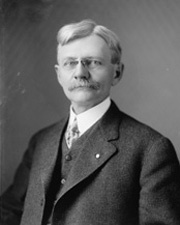
Thomas Riley Marshall was born March 14, 1854, in North Manchester, Indiana, to Daniel and Martha Patterson Marshall. Marshall's father was a country doctor who spent much of his time caring for his mother, who suffered from tuberculosis. Marshall attended Wabash College and studied law after graduating, gaining admittance to the Indiana bar in 1875. He lived with his mother until shortly before he married Lois Kimsey in 1895.
His family was traditionally Democratic, and Marshall was involved in politics from a young age. However, he did not successfully seek public office until 1908, when he was unexpectedly elected governor of Indiana.
Indiana was a pivotal swing state at the time, carried by every successful presidential candidate since 1880. Marshall, as the well-liked governor of a strategically important state, was in good position to advance to the national stage. Although Woodrow Wilson would have preferred a more progressive pick, he reluctantly chose Marshall because he balanced the ticket well. Marshall initially considered rejecting the offer because the job did not pay enough, but Mrs. Marshall's eagerness to go to Washington induced him to accept. With the Republican Party bitterly divided between President William Taft and former President Theodore Roosevelt, Wilson won in a landslide.
Marshall assumed that the job of vice president offered more responsibility and was disappointed when he realized the limits of his formal duties. Furthermore, his jovial disposition contrasted sharply with the serious intellectualism of Wilson, who had little to do with Marshall. President Wilson rarely consulted his vice president, and they often went months between meetings. Wilson was at least true to his words, having written in his 1885 book, Congressional Government, that the office of vice president "is one anomalous insignificance and curious uncertainty."
In spite of his limited role, Marshall was well-liked nationally, and the Democrats renominated him in 1916. He became the first vice president elected to a second term since John C. Calhoun in 1828. The vice president dutifully supported Wilson's actions before and during World War I and briefly presided over the cabinet when Wilson left on a lengthy trip to negotiate the terms of peace in Europe. However, Marshall gave up his presiding role, citing a conflict of interest in being both presiding officer of the Senate and the cabinet.
When President Wilson suffered a stroke in October 1919 and was almost completely incapacitated, Marshall remained largely unaware of his condition and reluctant to take any decisive action. He did not attempt to preside over cabinet meetings, thinking that such action might be viewed as an attempt to usurp Wilson's authority. While the Constitution clearly stated the vice president should take office if the President was unable "to discharge the Powers and Duties of the said Office," there was no established process for carrying this out in such a case. Although Marshall would have had substantial Congressional support had he asserted authority, he declined to do so. The final months of the Wilson administration passed in curious uncertainty, with Wilson unable to serve but unwilling to relinquish control. Such issues of presidential disability were later clarified with the adoption of the 25th amendment in 1967.
Marshall briefly pursued the nomination for President in 1920 but attracted limited support. He retired to Indiana afterwards and passed away on June 1, 1925.
(Source: http://millercenter.org/president/wil...)
More:
http://bioguide.congress.gov/scripts/...
http://en.wikipedia.org/wiki/Thomas_R...
http://www.senate.gov/artandhistory/h...
 David J. Bennett
David J. Bennett
 Lindley M. Garrison:
Lindley M. Garrison: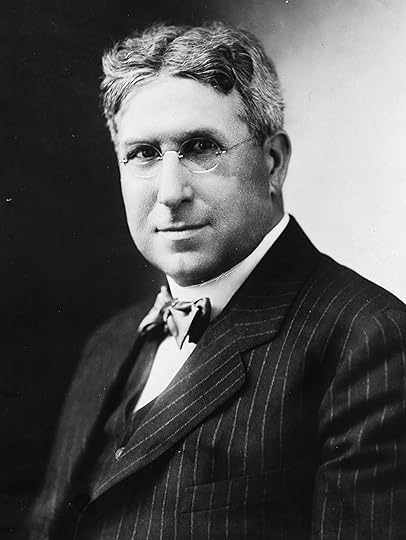
Lindley Garrison was born on November 28, 1864, in Camden, New Jersey. He was educated at public schools in Philadelphia, as well as at Episcopal Academy and Exeter, before spending a year at Harvard University in 1885. Garrison studied law at the Philadelphia law offices of Redding, Jones, & Carson, while earning a law degree from the University of Pennsylvania in 1886. Garrison practiced law in New Jersey, becoming a senior partner in the Jersey City firm of Garrison, McManus, & Enright in 1899. Moving to the public sector in 1904, Garrison became the youngest lawyer in history to be appointed vice chancellor of New Jersey.
He entered the cabinet of President Woodrow Wilson in 1913, serving as secretary of war until February 1916. During his tenure, he had to contend with hostilities involving Mexico, as well as ensuring the nation's military preparedness while Europe plunged into war. He resigned his post due to conflicts with the President. Garrison returned to the practice of law following his time in Wilson's cabinet and was appointed to the receivership of the Brooklyn Rapid Transit Company until 1923. He died in Seabright, New Jersey, on October 19, 1932.
(Source: http://millercenter.org/president/wil...)
More:
http://en.wikipedia.org/wiki/Lindley_...
http://www.firstworldwar.com/bio/garr...
 Albert S. Burleson:
Albert S. Burleson: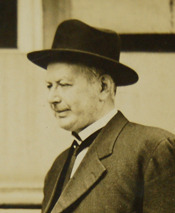
Born in San Marcos, Texas, in 1863, Burleson was raised there in a military family. His father was Confederate officer during the Civil War. Burleson attended Texas A&M and Baylor University, earning a law degree from the University of Texas at Austin in 1884. After a brief stint practicing law, Burleson was elected as both the Austin assistant city attorney and the district attorney for the Twenty-sixth Texas Judicial District.
A wealthy man, Burleson won an election to the U.S. House of Representatives as a Democrat and served from 1899 to 1913. He was on the House Agriculture, Census, and Foreign Affairs Committees and was a ranking member of the House Appropriations Committee. Burleson advised the 1912 Democratic presidential candidate Woodrow Wilson as part of Wilson's "veranda cabinet."
Although wary of Burleson's conservatism, President Wilson appointed Burleson postmaster general, the first native Texan ever to serve in the cabinet. While postmaster general, Burleson segregated African American and white workers and downgraded or fired southern blacks in the postal service; at the same time, he increased rural mail service and initiated airmail service. A staunch proponent of the Espionage Act during World War I, Burleson used his power to suppress certain kinds of expression. Following his time in government, Burleson returned to pursue agriculture in Austin, dying there in November 1937 at the age of 74.
(Source: http://millercenter.org/president/wil...)
More:
http://bioguide.congress.gov/scripts/...
http://en.wikipedia.org/wiki/Albert_S...
http://www.tshaonline.org/handbook/on...
 Franklin Lane:
Franklin Lane:
Franklin Lane was born on July 15, 1864, on Prince Edward Island in Canada. His father, a Presbyterian minister, moved the family to California's Napa Valley in the 1870s. Lane studied first at the University of California before earning a law degree from Hastings College of Law in San Francisco; he was admitted to the California state bar in 1888. Lane then pursued journalism, working as a correspondent for the San Francisco Chronicle and later as the editor of the Tacoma Daily News between 1891 and 1895. Returning to San Francisco, he became the city attorney and then county attorney from 1899 until 1904.
In the interim, he ran and lost races for the governorship of California in 1902 and the San Francisco mayoralty in 1903. After tragedy struck during the Great Earthquake of 1906, Lane helped to coordinate the city's relief squads. He soon traveled to Washington, D.C., to speak alongside President Theodore Roosevelt about the virtues of Yosemite National Park. Though a Democrat, Lane made such an impression on the President that TR hired him to serve on the Interstate Commerce Commission, becoming chairman of the commission on New Year's Day, 1913.
Lane's skill on the commission motivated newly elected President Wilson to appoint him secretary of the interior. Lane remained in that post from 1913 until 1920, advocating for the democratic, antimonopolistic, and efficient development of natural resources. His most striking accomplishment was the creation of the National Park Service in 1916.
Due to a political split with Wilson, alleged press leaks, and a meager salary as a public servant, Lane resigned on March 1, 1920, to become the vice president of the Pan-American Petroleum Company. He died during heart surgery in Minnesota on May 18, 1921, at the age of 56.
(Source: http://millercenter.org/president/wil...)
More:
https://en.wikipedia.org/wiki/Frankli...
http://www.cr.nps.gov/history/online_...
 Franklin K. Lane
Franklin K. Lane
 William Redfield:
William Redfield: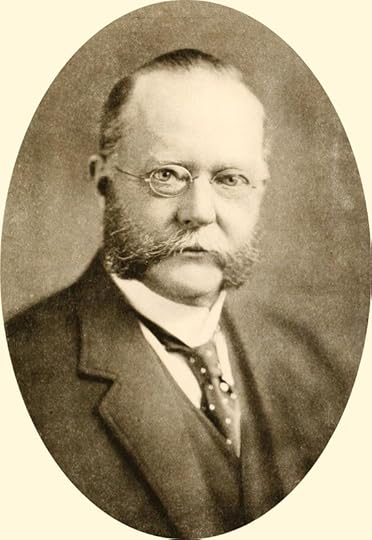
William Cox Redfield was born in Albany, New York, on June 18, 1858, and was educated in public schools and at home. He moved to Massachusetts to work first at the Pittsfield post office and thereafter at a local paper company.
He then moved to New York and took up work at a stationery firm, later becoming involved with mining and manufacturing as well as banking and life insurance. Redfield would serve as Brooklyn's Commissioner of Public Works before winning a seat in Congress (1910) from the staunchly Republican Fifth District in New York.
After President William Howard Taft split the Department of Commerce and Labor on his last day in office, Wilson appointed Redfield the nation's first secretary of commerce. Redfield remained in the cabinet until 1919, at which time he moved back to New York to work in the fields of banking, investments, and insurance. During this period, he wrote The New Industrial Day about the "new scientific spirit in management." William Cox Redfield died in New York on June 13, 1932.
(Source: http://millercenter.org/president/wil...)
More:
https://en.wikipedia.org/wiki/William...
 James McReynolds:
James McReynolds:
The son of a surgeon, James Clark McReynolds was born on February 3, 1862, in Elkton, Kentucky. He graduated from Vanderbilt University in 1882 and followed in the footsteps of the President he would serve, Woodrow Wilson, by studying law at the University of Virginia, earning his degree in 1884. McReynolds entered the political arena when he served briefly as private secretary to U.S. Senator Howell E. Jackson. He returned to his law practice in Nashville, Tennessee, before losing in a bid for Congress as a "gold" Democrat in 1896.
McReynolds taught law at Vanderbilt University from 1900 to 1903, at which time he was appointed assistant U.S. attorney general by President Theodore Roosevelt. As special counsel for the government from 1907 to 1912, McReynolds prosecuted violators of the Sherman Antitrust Act. President Woodrow Wilson named him attorney general on March 5, 1913.
When Associate Justice Horace Lurton resigned from the Supreme Court in August 1914, Wilson tapped McReynolds to take his place. McReynolds served on the high court for twenty-six years, until February 1, 1941, voting down most New Deal measures during the presidency of Franklin Roosevelt. He died on August 24, 1946, in Washington, D.C.
(Source: http://millercenter.org/president/wil...)
More:
http://en.wikipedia.org/wiki/James_Cl...
http://www.supremecourthistory.org/hi...
http://www.justice.gov/ag/aghistpage....
 David Franklin Houston:
David Franklin Houston: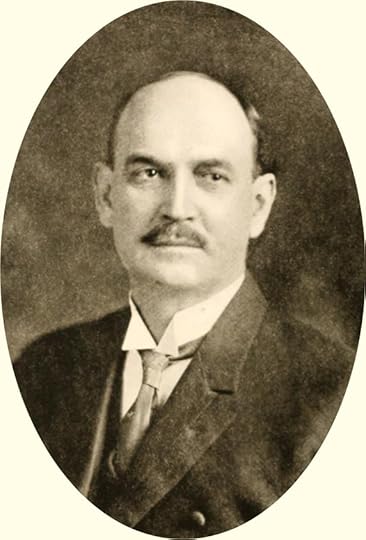
Born in Union County, North Carolina, on February 17, 1866, David Houston earned a B.A. from the University of South Carolina (1887) and pursued graduate study in political science and economics at Harvard (1892). He taught political science at the University of Texas from 1894 to 1902, becoming president of Texas A&M University in 1902.
He next assumed the presidency of the University of Texas at Austin. Houston also became chancellor of Washington University, helping that school gain prominence in the Midwest. It was through Colonel Edward House that Houston met Woodrow Wilson, an occasion that took place when Wilson was governor of New Jersey.
Houston served as agriculture secretary in the cabinet of President Wilson from 1913 to 1920. Houston had intended to serve in that post for only two years, due to "financial reasons," but ended up remaining for seven. He would oversee the expansion of production of food for domestic and foreign consumption while also addressing problems of rural life. In the depressed climate following World War I, Houston provided Europe with food from American farmers.
When Treasury Secretary Carter Glass resigned from the cabinet, Wilson tapped Houston to take his place. David Houston died on September 2, 1940.
(Source: http://millercenter.org/president/wil...)
More:
http://en.wikipedia.org/wiki/David_F....
http://www.tshaonline.org/handbook/on...
 William B. Wilson:
William B. Wilson:
William B. Wilson was born in the Scottish village of Blantyre on April 2, 1862. His family then emigrated to the village of Arnot, Pennsylvania. After attending local schools, Wilson dropped out to work in the coal mines, where he would remain until 1898. Wilson was president of the district miners' union of the National Progressive Union from 1888 to 1890, earning a reputation as a fervent unionist, an honest broker, and a dedicated worker.
Wilson ran unsuccessful political campaigns for the Pennsylvania state legislature in 1888 and the U.S. House of Representatives in 1892. In 1900, however, he won election to serve as secretary-treasurer for the United Mine Workers of America (UMWA), where he would stay until 1908.
As a Democrat, Wilson would also win a seat in the U.S. House of Representatives (1906), serving a staunchly Republican district. He would be known as labor's best friend during his time in the House (1907-1913), where he was chairman of the Committee on Labor, the Committee on Mines, and the Committee on Merchant Marine and Fisheries.
After President William Howard Taft separated the Department of Commerce and Labor into two separate agencies on his last day in office, President Woodrow Wilson named William Wilson to head the newly formed Department of Labor, despite it having no permanent building. Wilson was, in some ways, the ideal candidate for the position, for he was the author of legislation separating the two cabinet agencies. The new department would consist of four bureaus: the Bureau of Labor Statistics, the Bureau of Immigration, the Bureau of Naturalization, and the Children's Bureau.
Wilson remained in the cabinet from 1913 to 1921. Thereafter, he ran unsuccessfully for the U.S. Senate in 1926 while at the same time pursuing agricultural and mining interests. William Wilson died at his home in Blossburg, Pennsylvania, on May 25, 1934.
(Source: http://millercenter.org/president/wil...)
More:
http://en.wikipedia.org/wiki/William_...
http://www.dol.gov/oasam/programs/his...
http://www.spartacus.schoolnet.co.uk/...
 Newton Baker:
Newton Baker:
Newton Baker was born in West Virginia in 1871. After graduating from John Hopkins University (1892) he became as a lawyer in Cleveland, Ohio.
Baker was a reforming Democratic mayor of Cleveland (1912-16) and a person who had expressed pacifist beliefs, surprisingly accepted the post of secretary of war under Woodrow Wilson.
In 1917 Baker was criticised by Republicans such as Henry Cabot Lodge for not making Leonard Wood, field commander of the United States Army. Instead Baker appointed John Pershing.
After the United States entered the First World War Baker drew up plans for universal military conscription which resulted in the mobilization of more than 4 million men.
Baker was a member of the USA's delegation to the Paris Peace Conference of 1919 and helped draw up the covenant of the League of Nations.
In 1920 Baker returned to his legal practice in Cleveland. He joined the Permanent Court of Arbitration at the Hague in 1928 and the following year Herbert Hoover appointed him to the Law Enforcement Commission. In his retirement Baker wrote Why We Went to War (1936). Newton Baker died on 25th December, 1937.
(Source: http://www.spartacus.schoolnet.co.uk/...)
More:
http://en.wikipedia.org/wiki/Newton_D...
http://www.firstworldwar.com/bio/bake...
 Bryan wrote: "Newton Baker: ...In 1917 Baker was criticised by Republicans such as Henry Cabot Lodge for not making Leonard Wood, field commander of the United States Army. Instead Baker appointed John Pershing.
Bryan wrote: "Newton Baker: ...In 1917 Baker was criticised by Republicans such as Henry Cabot Lodge for not making Leonard Wood, field commander of the United States Army. Instead Baker appointed John Pershing.After the United States entered the First World War Baker drew up plans for universal military conscription which resulted in the mobilization of more than 4 million men."
It’s interesting that Newton Baker picked John Pershing as the field commander of the United States Army and when America entered the Great War (WWI) he overruled the general on a rather major issue. Pershing as commander of the AEF did not want the U.S. Marines to fight in France on land, but rather remain at home in America. Baker’s decision allowed one active brigade of Marines, the 4th Brigade, to cross the Atlantic and fight.
 Interesting, Mark. I expect politics got in the way of Woods becoming commander. I didn't know about the Marines decision.
Interesting, Mark. I expect politics got in the way of Woods becoming commander. I didn't know about the Marines decision.
 Bryan wrote: "Interesting, Mark. I didn't know about the Marines decision."
Bryan wrote: "Interesting, Mark. I didn't know about the Marines decision."I’m sure it was classic politics along with egos in a power struggle. Because the Marines have always been the “little brother” to the U.S. Navy, most certainly Wilson’s good friend Secretary of the Navy Josephus Daniels was in the debate with Baker and Pershing. It would have been very interesting to hear the discussions.
 Walter Hines Page:
Walter Hines Page:
Born in Cary, North Carolina in 1855, Walter Hines Page profoundly influenced American culture in the early twentieth century during his tenure at several national periodicals, most notably the Atlantic. After rising to prominence as a journalist, Page entered public service, serving as the U.S. ambassador to the United Kingdom during the Great War.
Page’s father, Allison Francis “Frank” Page, was a businessman whose chief interests lay in construction and logging. Before the Civil War, the elder Page made a small fortune by building commercial structures in Raleigh, and he founded the towns of Cary and Aberdeen. Frank did not own a plantation and, according to several sources, opposed slavery. He had been a member of the Whig party in the 1850s and did not believe that Lincoln’s election warranted secession. Nevertheless, he owned slaves. Historian Burton J. Hendrick, who won a Pulitzer Prize in 1923 for The Life and Letters of Walter H. Page, asserts that Frank Page exerted a more profound influence on Walter than any other figure; indeed, Frank Page’s unusual relationship with Southern culture closely resembled his son’s.
Shortly before his death, Walter Page wrote about his memory of Sherman’s army marching past his family’s Cary home in 1865. A colonel in the army seized a part of the family house, which he used as his quarters, and other soldiers plundered the family’s land. Though Confederate soldiers had acted similarly earlier in the war, Page’s papers indicate that the conduct of Sherman’s army indelibly affected his view of the North. After the war, Page’s enrollment in the Bingham School, a North Carolina military academy instilled a sense of Southern honor. After building a strong academic record at Bingham, Page enrolled at Trinity College (now Duke University) in 1871, only to leave for Randolph-Macon College of Virginia after the autumn of 1872. While at Randolph-Macon, Page excelled in mathematics, Latin, and, most of all, Greek.
His achievements at Randolph-Macon led to his selection as one of the first twenty graduate students of Johns Hopkins University in 1876. He earned a fellowship in Greek. At Hopkins, Page developed a close relationship with renowned American classicist Basil Lanneau Gildersleeve, but by late 1877 had become bored by the specialized foci of his studies.
Soon dropping out of Hopkins, Page briefly taught school in Kentucky and wrote for the Age, a Louisville periodical whose creators sought to replicate the format of The Nation in the South. The Age failed, and Page found himself unable to find work in journalism in the East. He consequently moved to Missouri, where he wrote for the Gazette of St. Joseph and rose to editor. Tiring of life in St. Joseph, Page returned to the South, where he planned to record his observations and publish them in Northern papers. On the trip, he met figures such as Jefferson Davis and the young Woodrow Wilson.
This trip led to a stint on the New York World, which was then a paper of literary merit. When the World was purchased by Joseph Pulitzer, the entire writing staff of the paper resigned in protest. Page returned to North Carolina, founding a paper called the State Chronicle in Raleigh. Page used the Chronicle to champion education and industrialization in North Carolina.
Though the paper caused a stir in North Carolina, and became widely known outside the South, it was a commercial failure, and Page returned north in 1885. He spent two years at the Evening Post before moving to the Forum, whose founders aimed to serve Americans with a monthly of high journalistic and literary quality. Page began writing for the Forum in 1887 and soon became its editor.
At the Forum, Page adopted a style of editing that proved revolutionary in journalism. Instead of following the tradition of merely reading and revising contributions, Page was proactive, effectively planning the content of each issue of the Forum. Under his leadership, the monthly became financially successful, and when the owners of the journal made clear that Page would not be rewarded monetarily for the success of the magazine, he resigned.
In 1898, Page took over what was arguably the most prestigious journal published in the United States, the Atlantic Monthly. At the Atlantic, Page turned around a magazine whose fortunes had been slumping under hidebound editors. Circulation increased drastically under Page, as did the literary quality of the magazine.
Though serving as editor of the Atlantic made Page nationally well-known, he did not stay there long. After developing a business relationship with Frank Doubleday, who had been trying to take over the struggling Harper publishing house, Page left the Atlantic to form a new publishing house with Doubleday. At the new firm, called Doubleday, Page, and Company, Page formed a new magazine called World’s Work. The content of the new journal was mostly journalistic, in contrast to the Forum and the Atlantic, both of which had been characterized by a mixture of journalism, literature, and criticism. In World’s Work, Page championed education, particularly for Southerners both black and white, who, Page felt, were falling behind their Northern compatriots. Moreover, he resisted yellow journalism and muckraking, both of which he regarded as tasteless and sensational.
Having established a national reputation, Page was asked by President Theodore Roosevelt to evaluate living conditions in the South. After supporting Woodrow Wilson’s presidential campaign in 1912, Page lobbied him for a position in the new administration, and Wilson responded by naming Page ambassador to the United Kingdom in 1913. Some historians have criticized Page's performance in the Court of St. James's. They contend that his affection for Britain compromised his judgment in the early years of the Great War and led him to promote policies contrary to the U.S. national interest. Page's North Carolina heritage and Bingham education appear to have shaped his romantic view of Great Britain and of England in particular. This inclination diminished his clout in the Wilson Administration. He died in Britain in 1918.
(Source: http://www.northcarolinahistory.org/c...)
More:
http://en.wikipedia.org/wiki/Walter_H...
 A. Mitchell Palmer:
A. Mitchell Palmer:
Born to a Quaker family near White Haven, Pennsylvania, on May 4, 1872, A. Mitchell Palmer attended a Moravian parochial high school in Bethlehem, Pennsylvania, graduating later from Swarthmore College in 1891. He began working as the official stenographer of the Forty-third Pennsylvania Judicial District in 1892. Palmer studied law while working as a stenographer and was admitted to the Pennsylvania state bar in 1893.
He entered national politics while a member of the Democratic state executive committee, winning a congressional seat from the Twenty-sixth Congressional District in 1908. He was re-elected twice, serving as the House Democratic Caucus chairman during his last term. Palmer ran unsuccessfully for the U.S. Senate in 1914, later declining an appointment as an appellate justice on account of a low salary. President Woodrow Wilson appointed him to the post of Alien Property Custodian on October 22, 1917; in that position, Palmer oversaw and confiscated the property of German-Americans during World War I.
When Attorney General Thomas Gregory resigned in March 1919, Wilson sought to appoint someone other than Palmer to the post. Failing in that matter, Wilson tapped Palmer to head the Justice Department; he would remain in that post until the end of the Wilson administration. Palmer initiated a series of raids on "subversive" elements in American society -- many of them Communists and Socialists -- touching off what came to be known as the "Red Scare." Following his time in government, Palmer returned to his law practice, dying on May 11, 1936.
(Source: http://millercenter.org/president/wil...)
More:
http://en.wikipedia.org/wiki/Alexande...
http://www.spartacus.schoolnet.co.uk/...
http://bioguide.congress.gov/scripts/...
http://www.justice.gov/ag/aghistpage....
 Joseph W. Folk:
Joseph W. Folk:
Missouri Governor. As an attorney for the Amalgamated Association of Street Railway Employees in its struggle against the St. Louis Transit Company in 1900, his poltical ambitions were ignited. He was elected circuit attorney for St. Louis in 1900 and participated in a series of municipal investigations. Bribes were uncovered in connection with street railway and garbage company franchises that resulted in several trials and convictions, including that of St. Louis boss Edward Butler. He also assisted the state attorney general in the investigation of bribes involving the state legislature. These investigations, prosecutions, and convictions gained him national attention and enabled him to win the Democratic nomination for Governor of Missouri in 1904. He was elected with 52% of the vote. As governor, he was known as a progressive reformer. His administration reflected on the state level many of the reforms that were advocated nationally by President Theodore Roosevelt. His reforming zeal earned him the nickname "Holy Joe." A compulsory education bill, a child labor bill, an eight hour labor bill in mines and smelters, and a maximum hour law for railway workers were passed. He successfully pushed for a Sunday closing law, restrictions on race track gambling, anti-lobbying legislation, a direct primary election law, a pure food act, and the submission of the iniative and referendum for popular approval. His extensive reform program became known as the "Missouri Idea" and gained him national attention as well as the antipathy of the state's vested interests. State law limited him to only one term and he left office as a relatively young man in 1909. Having split from the machine and establishment elements within his party, his efforts to achieve further political offices were frustrated. He toured as a lecturer and advocate for reform and progressive causes. His aggressive reform record made him a potential candidate for the Democratic nomination for President of the United States in 1912, but he withdrew in favor of his fellow Missourian Speaker of the House Champ Clark. Ultimately, he enthusiastically supported Woodrow Wilson for the Presidency in 1912. Wilson appointed him solicitor general of the State Department in 1912 and chief counsel for the Interstate Commerce Commission in 1914. He ran unsuccessfully for the United States Senate in 1918 and resumed a private law practice in Washington D. C. in 1919. In March of 1922, he suffered a severe nervous breakdown from which he never recovered.
(Source: http://www.findagrave.com/cgi-bin/fg....)
More:
http://en.wikipedia.org/wiki/Joseph_W...
 Samuel Gompers:
Samuel Gompers:
Samuel Gompers was the first and longest-serving president of the American Federation of Labor (AFL); it is to him, as much as to anyone else, that the American labor movement owes its structure and characteristic strategies. Under his leadership, the AFL became the largest and most influential labor federation in the world. It grew from a marginal association of 50,000 in 1886 to an established organization of nearly 3 million in 1924 that had won a permanent place in American society. In a society renowned for its individualism and the power of its employer class, he forged a self-confident workers' organization dedicated to the principles of solidarity and mutual aid. It was a singular achievement.
Born in 1850 into a Jewish family in London, Gompers began making cigars alongside his father at the age of 10. In 1863, the entire family immigrated to New York City. Settling into a tenement apartment on Houston Street, Gompers continued rolling cigars at home with his father until he found work in one of the local shops. In 1864, he joined Local 15 of the United Cigar Makers; two years later, he married Sophia Julian, with whom he would have 12 children. At his job and in his local union, Gompers socialized with a group of older émigré socialists and labor reformers whom he would always credit for his commitment to trade unionism as the essential vehicle for bringing about social reform.
In 1875, Gompers was elected president of the reorganized Local 144 of the Cigar Makers' International Union (CMIU) in New York City, a post he held from 1875 to 1878 and again from 1880 to 1886. He then served as second vice president of the CMIU from 1886 to 1896, when he was elevated to first vice presidency. In the 1880s, Gompers was also instrumental in establishing the Federation of Organized Trades and Labor Unions, which he served as vice president from 1881 to 1886. When the FOTLU re-organized in 1886 as the American Federation of Labor, Gompers was elected its first president, a position he held for nearly 40 years.
As a local and national labor leader, Gompers sought to build the labor movement into a force powerful enough to transform the economic, social and political status of America's workers. To do so, he championed three principles. First, he advocated craft or trades unionism, which restricted union membership to wage earners and grouped workers into locals based on their trade or craft identification. This approach contrasted with the effort of many in the Knights of Labor to organize general, community-based organizations open to wage earners as well as others, including employers. It also contrasted sharply with the "one big union" philosophy of the Industrial Workers of the World.
Second, Gompers believed in a pure-and-simple unionism that focused primarily on economic rather than political reform as the best way of securing workers' rights and welfare. Gompers's faith in legislative reform was dashed in the 1880s after the New York Supreme Court overturned two laws regulating tenement production of cigars that he had helped pass. Gompers saw that what the state gave, it could also take away. But what workers secured through their own economic power in the marketplace, no one could take away.
Third, when political action was necessary, as Gompers increasingly came to believe in his later years, he urged labor to follow a course of "political nonpartisanship." He argued that the best way of enhancing the political leverage of labor was to articulate an independent political agenda, seek the endorsement of existing political parties for the agenda and mobilize members to vote for those supporting labor's agenda.
With his election as president of the AFL in 1886, he sought to build a national federation of trade unions dedicated to these principles. He immediately threw himself into the organization's first big effort—a nationwide general strike on May 1, 1886— in support of an eight-hour workday.
At the end of the 1890s, the AFL's membership began to soar-faster than in any other period in the history of the U.S. union movement. But the anti-union hostility of many employers halted the AFL's rapid growth in the early 1900s and forced Gompers and the AFL to adopt a more political stance. Employers had long sought to use the nation's new anti-trust laws as a legal basis for court-issued injunctions against strikes and boycotts. And in 1906, after nonunion employers sued the hatters' union and each individual member for triple damages in compensation for the losses they had suffered in a union boycott, Gompers concluded that the movement had to seek legislative relief. The Danbury Hatters' case, he wrote, "threatened the very existence of organized labor." It was "of paramount importance that labor unions be specifically removed from the application of anti-trust law and that injunction use be defined and regulated."
To secure the rights of labor to organize and engage in economic action, the AFL and its affiliates launched a far-reaching and ultimately successful campaign to elect union members and other labor-friendly candidates to political office.
The high point of the AFL's new, more political strategy came during the administration of President Woodrow Wilson (1912–1920), when Gompers and the federation enacted much of their program and enjoyed their greatest influence. During World War I, Wilson appointed Gompers to the Council of National Defense, where he helped mobilize labor support for the war. Gompers also was crucial in convincing Wilson to craft a wartime labor policy that for the first time in U.S. history explicitly articulated government support for independent trade unions and collective bargaining. Labor union membership soared by the end of the war, reaching into the millions. At the war's end, Wilson appointed Gompers to the Commission on International Labor Legislation at the Versailles Peace Conference, where Gompers helped create what would become the International Labor Organization (ILO). Although labor suffered considerable reverses in the 1920s, with the war crisis over and Wilson's administration at an end, the labor policies forged in this period laid the basis for the New Deal endorsements of labor rights in the 1930s.
Gompers died in December 1924 in San Antonio, Texas, where he had been rushed after falling ill in Mexico City while attending the inauguration of the new president of Mexico.
(Source: http://www.aflcio.org/About/Our-Histo...)
More:
http://en.wikipedia.org/wiki/Samuel_G...
http://www.history.umd.edu/Gompers/bi...
 Harold C. Livesay
Harold C. Livesay(no image)Samuel Gompers, American Statesman by Samuel Gompers
 Francis B/ Sayre, Sr.:
Francis B/ Sayre, Sr.: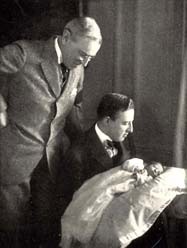
was a professor at Harvard Law School, High Commissioner of the Philippines, and a son-in-law of President Woodrow Wilson.
More:
http://en.wikipedia.org/wiki/Francis_....
http://archives.williams.edu/manuscri...
 Cary T. Grayson:
Cary T. Grayson:
Gary Travers Grayson was born in Culpeper, Va., 11 October 1878. After completing his medical studies, he was appointed Acting Assistant Surgeon, USN, 14 July 1903. A variety of posts led Grayson to Washington, where on 12 December 1912 he was assigned to the Bureau of Medicine and Surgery with additional duty as Aide to the White House. Commissioned Rear Admiral 29 August 1916, he served as personal physician and aide to President Woodrow Wilson during World War I. Before transferring to the Retired List 20 December 1928, Admiral Grayson received the Navy Cross for exceptionally meritorious service as aide and physician to President Wilson. He was also made Commander of the National Order of the Legion of Honor by the French government. Admiral Grayson served as chairman of the American Red Cross from 1935 until his death 15 February 1938.
(Source: http://www.history.navy.mil/danfs/g8/...)
More:
http://www.arlingtoncemetery.net/cgra...
https://en.wikipedia.org/wiki/Cary_T....
(no image)Woodrow Wilson: An Intimate Memoir by Cary T. Grayson
 James A. Reed:
James A. Reed: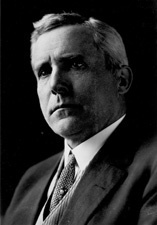
a Senator from Missouri; born on a farm near Mansfield, Richland County, Ohio, November 9, 1861; moved with his parents to Cedar Rapids, Linn County, Iowa, in 1864; attended the public schools and Coe College, Cedar Rapids, Iowa; studied law; admitted to the bar in 1885 and commenced practice in Cedar Rapids, Iowa; moved to Kansas City, Mo., in 1887 and continued the practice of law; counselor of Kansas City 1897-1898; prosecuting attorney of Jackson County 1898-1900, when he resigned; mayor of Kansas City 1900-1904; elected as a Democrat to the United States Senate in 1910; reelected in 1916 and 1922 and served from March 4, 1911, to March 3, 1929; was not a candidate for renomination in 1928; chairman, Committee on Manufactures (Sixty-third through Sixty-fifth Congresses), Committee on Public Buildings and Grounds (Sixty-fifth Congress), Committee on Standards, Weights and Measures (Sixty-sixth Congress); resumed the practice of his profession in Kansas City, Mo.; died at his summer home near Fairview, Oscoda County, Mich., September 8, 1944; interment in Mount Washington Cemetery, near Kansas City, Mo.
(Source: http://bioguide.congress.gov/scripts/...)
More:
http://en.wikipedia.org/wiki/James_A....
 Segregation of the U.S. Government (1913):
Segregation of the U.S. Government (1913):In 1912 Woodrow Wilson, the Democratic candidate for president, promised fairness and justice for blacks if elected. In a letter to a black church official, Wilson wrote, "Should I become President of the United States they may count upon me for absolute fair dealing for everything by which I could assist in advancing their interests of the race." But after the election, Wilson changed his tune. He dismissed 15 out of 17 black supervisors who had been previously appointed to federal jobs and replaced them with whites. He also refused to appoint black ambassadors to Haiti and Santa Domingo, posts traditionally awarded to African Americans. Two of Wilson's cabinet ministers, Postmaster General Albert Burelson and Treasury Secretary William McAdoo, both Southerners, issued orders segregating their departments. Throughout the country, blacks were segregated or dismissed from federal positions. In Georgia, the head of the Internal Revenue division fired all black employees: "There are no government positions for Negroes in the South. A Negro's place in the corn field." He said. The President's wife, Ellen Wilson, was said to have had a hand in segregating employees in Washington, encouraging department chiefs to assign blacks separate working, eating, and toilet facilities. To justify segregation, officials publicized complaints by white women, who were thought to be threatened by black men's sexuality and disease.
Some African-Americans were fearless in fighting back. Mary Church Terrell, a federal employee and leading African-American clubwoman, embarrassed officials by publicly threatening to publicize the fact that restrooms had been segregated in her area. In return for her not publicizing the situation, her department agreed to cancel the order.
Also, W.E.B. Du Bois sharply criticized President Wilson in THE CRISIS: "The federal government has set the colored apart as if mere contact with them were contamination. Behind screens and closed doors they now sit as though leprous. How long will it be before the hateful epithets of 'Nigger' and 'Jim Crow' are openly applied?" The NAACP's active campaign forced Wilson to back off from segregating the federal government. Jim Crow was checked but not rooted out. It would remain in place until the New Deal of Franklin Roosevelt.
(Source: http://www.pbs.org/wnet/jimcrow/stori...)
More:
http://postalmuseum.si.edu/AfricanAme...
http://www.apwu.org/laborhistory/06-1...
 James Vardaman:
James Vardaman:
Elected Governor of Mississippi in 1903, James K. Vardaman rode to power on a wave of white populism and racist politics. Dressed in white suits and sporting flowing black hair that reached down to his shoulders, Vardaman was an imposing figure. Bold and charismatic, he could command any room with his masterful oration. At first the Delta elite supported Vardaman, because they approved of his levee board appointments. But it was soon evident that their interests clashed.
While Delta planters like LeRoy Percy were busy working to attract and keep African American laborers in Mississippi, their efforts were out of sync with the atmosphere in the rest of the state. Vardaman, a master at manipulating racial hatred for his own political gain, tapped into a groundswell of popular support for white supremacy and began championing the cause.
Vardaman denounced the education of African Americans as "a positive unkindness that renders him unfit for the work which the white man has prescribed him and which he will be forced to perform." On the nature of African Americans, he publicly stated that they were, "lazy, lying, lustful animal[s], which no amount of training can transform into a tolerable citizen." At the time, his sentiments were well received in many segments of the white community.
Vardaman once went so far as to declare, "if it is necessary every Negro in the state will be lynched; it will be done to maintain white supremacy." For Delta planters, statements of that sort threatened financial ruin. If lynchings in the state dramatically increased, planters feared a swift exodus of African American labor from the Delta and an end to the economic prosperity the landowners enjoyed.
In 1910, when Anselm J. McLaurin, a U. S. Senator from Mississippi, died in office, Vardaman was poised to claim the vacant seat and bring his views to the national stage. LeRoy Percy, who had always operated behind the scenes, set out to publicly defeat him and the politics he promoted. Through a series of ingenious back-room gambits, Percy managed to outsmart Vardaman and maneuver himself into the Senate seat instead. His goal accomplished, Percy enjoyed great popularity in the Senate, but not in his home state. Vardaman enjoyed vast support in the Mississippi hill country and in the central part of the state, where many found Percy pompous, condescending and elitist. Poor white residents deeply resented the plantation system and Percy's power and wealth.
When Percy ran for reelection, Vardaman knew just how to beat him. He capitalized on populist animosity towards Percy and the landed aristocracy of the Delta, and the voters responded to his message. Vardaman supporters came out in full force, and Percy was crushed in the election. Vardaman won 74 out of the 75 counties in Mississippi in a landslide victory that signaled the end of the Delta patrician's control of the state.
(Source: http://www.pbs.org/wgbh/americanexper...)
More:
http://en.wikipedia.org/wiki/James_K....
http://bioguide.congress.gov/scripts/...
 by William F Holmes
by William F Holmes
 William Trotter:
William Trotter:
African American journalist and vocal advocate of racial equality in the early 20th century. From the pages of his weekly newspaper, The Guardian, he criticized the pragmatism of Booker T. Washington, agitating for civil rights among blacks. Along with W.E.B. Du Bois and others, Trotter helped form the Niagara Movement and create the National Association for the Advancement of Colored People (NAACP), from which he later broke ranks.
Raised in the Hyde Park neighbourhood of Boston, Trotter graduated with honours from Harvard University as the first black Phi Beta Kappa graduate. After early success in Boston real estate, he founded The Guardian in 1901, publishing it in the same building that was once headquarters of the abolitionist newspaper The Liberator published by William Lloyd Garrison. Outspoken in his views, Trotter was arrested for heckling Booker T. Washington in 1903, publicly challenged the policies of Presidents Theodore Roosevelt and Woodrow Wilson, and weighed in on many of the racial conflicts of his time, such as the Brownsville Affair and the Scottsboro case. Trotter also protested a screening of the film Birth of a Nation. Over objections by the U.S. government, he attended the Paris Peace Conference in 1919 as a delegate of the National Equal Rights League.
(Source: http://www.britannica.com/EBchecked/t...)
More:
http://en.wikipedia.org/wiki/William_...
http://www.jstor.org/stable/2717036
 Dudley Field Monroe:
Dudley Field Monroe: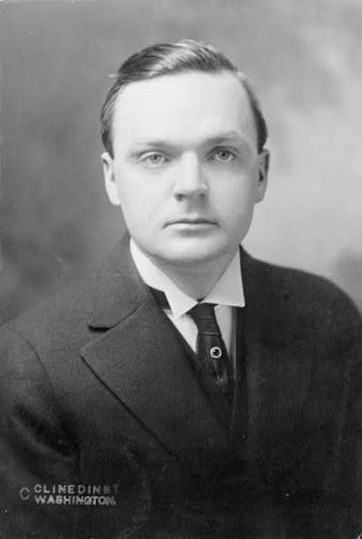
Dudley Field Malone, attorney, political operative, and Wilson administration official, was born on 2 June 1882, in New York City, New York. He graduated from the College of St. Francis Xavier in 1903 and subsequently completed two courses at Fordham Law School. Malone married three times, the first in 1908 to Mary O’Gorman, the second in 1921 to Doris Stevens, and the third in 1930 to Edna Johnson. Malone became involved in New York politics in opposition to the Tammany Hall machine and helped organize Woodrow Wilson’s primary and general election campaign for the presidency in 1912. In recognition of his service, Malone was invited to spend election night that year with the Wilson family, and the President appointed him third Assistant Secretary of State in 1913. Later that year, Wilson appointed Malone collector of the Port of New York, where he did battle with the Tammany Hall establishment. After the sinking of the Lusitania in 1915, Malone was criticized for allowing the ship to be loaded with munitions in New York harbor. Malone resigned his post as collector in September 1917 in a disagreement with Wilson over women’s suffrage, and returned to the practice of law. He served on the defense team in the Scopes trial in 1925 and eventually moved to California, where he served as counsel for Twentieth Century Fox and worked as a character actor. He died in Culver City, California, on 5 October 1950.
(Source: http://wwl2.dataformat.com/HTML/30480...)
More:
http://en.wikipedia.org/wiki/Dudley_F...
 James W. Gerard:
James W. Gerard: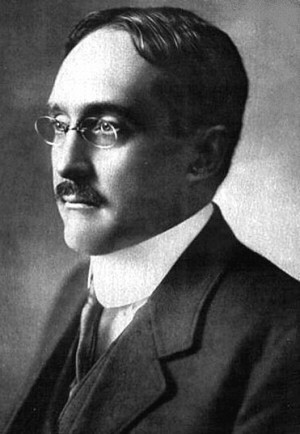
James Watson Gerard was born August 25, 1867 at Geneseo, New York. He received his AB and AM degrees from Columbia University in 1890 and 1891 respectively. In 1892 he received his LL. B. from New York Law School and was admitted to the New York bar. He entered practice with Bowers and Sands, a firm founded by his paternal grandfather, and became a partner in 1899.
He was interested in politics and in 1907 was elected an associate justice of the Supreme Court of the State of New York. He resigned before the end of his term to accept an appointment from President Woodrow Wilson as United States Ambassador to Germany in 1913. After World War I began his duties increased, and he was entrusted with the interests of Great Britain, Japan, Serbia, Romania, and San Marino. The German government asked him to leave in January 1917. He left the following month and retired from diplomatic service the following July.
Gerard returned to private law practice but retained his interest in Democratic politics. He played a leading role in the nomination of Franklin D. Roosevelt as the Democratic candidate for President in 1932 and served several terms as treasurer for the Democratic National Committee and as chairman of the Democratic Finance Committee.
He wrote three books: My Four Years in Germany (1917), Face to Face with Kaiserism (1918), and My First Eighty-Three Years in America (1951).
Gerard married Mary Daly, daughter of Marcus Daly, in 1901. During his lifetime he maintained an interest in the Montana properties and investments of the Daly family, and had a ranch of his own north of Hamilton, Montana. He died September 6, 1951, in New York City.
(Source: http://nwda.orbiscascade.org/ark:/804...)
More:
http://en.wikipedia.org/wiki/James_W....
 James W. Gerard
James W. Gerard
 William Sharp:
William Sharp: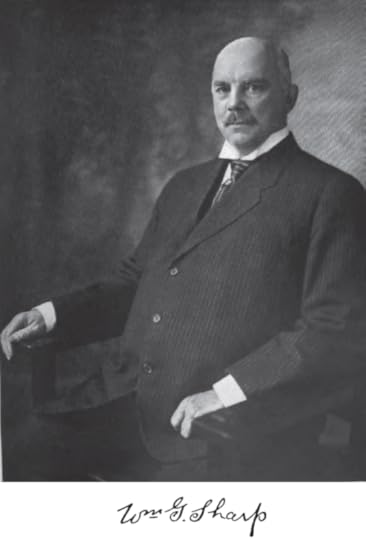
a Representative from Ohio; born in Mount Gilead, Morrow County, Ohio, March 14, 1859; moved with his parents to Elyria, Ohio; was graduated from the public schools and from the law department of the University of Michigan at Ann Arbor in 1881; was admitted to the bar the same year and commenced practice in Elyria, Ohio; served as prosecuting attorney of Lorain County, Ohio, 1885-1888; also interested in the manufacture of charcoal, pig iron, and chemicals; unsuccessful Democratic candidate for election in 1900 to the Fifty-seventh Congress; delegate to the Democratic National Convention in 1904; elected as a Democrat to the Sixty-first, Sixty-second, and Sixty-third Congresses and served from March 4, 1909, to July 23, 1914, when he resigned to become Ambassador to France, in which capacity he served until April 14, 1919; returned to Elyria, Lorain County, Ohio, and engaged in literary pursuits; died in Elyria, Ohio, November 17, 1922; interment in Ridgelawn Cemetery.
(Source: http://bioguide.congress.gov/scripts/...)
More:
http://en.wikipedia.org/wiki/William_...
 John Kern:
John Kern: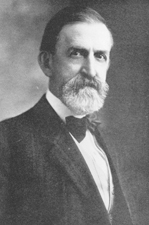
a Senator from Indiana; born in Alto, Howard County, Ind., December 20, 1849; attended the common schools and the normal college at Kokomo, Ind.; taught school; graduated from the law department of the University of Michigan at Ann Arbor in 1869; admitted to the bar the same year and commenced practice in Kokomo; unsuccessful candidate for election to the State house of representatives in 1870; city attorney of Kokomo 1871-1884; reporter of the Indiana Supreme Court 1885-1889; member, State senate 1893-1897; special assistant United States district attorney 1893-1894; city solicitor of Indianapolis 1897-1901; unsuccessful Democratic candidate for Governor in 1900 and 1904; unsuccessful candidate for Vice President of the United States on the Democratic ticket with William Jennings Bryan in 1908; elected as a Democrat to the United States Senate and served from March 4, 1911, to March 3, 1917; unsuccessful candidate for reelection in 1916; Democratic caucus chairman 1913-1917; chairman, Committee on Privileges and Elections (Sixty-third and Sixty-fourth Congresses); died in Asheville, N.C., August 17, 1917; interment on the Kern estate near Hollins, Va.; reinterment in Crown Hill Cemetery, Indianapolis, Ind., in 1929.
(Source: http://bioguide.congress.gov/scripts/...)
More:
http://en.wikipedia.org/wiki/John_W._...
 Robert Owen:
Robert Owen: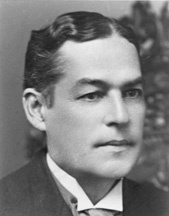
a Senator from Oklahoma; born in Lynchburg, Campbell County, Va., February 2, 1856; attended private schools in Lynchburg, Va., and Baltimore, Md.; graduated from Washington and Lee University, Lexington, Va., 1877; moved to Salina, Indian Territory, and taught school among the Cherokee Indians; studied law; admitted to the bar in 1880 and commenced practice; federal Indian agent for the Five Civilized Tribes 1885-1889; member of the Democratic National Committee 1892-1896; organized the First National Bank of Muskogee in 1890 and was its president for ten years; upon the admission of Oklahoma as a State into the Union in 1907 was elected as a Democrat to the United States Senate for the term ending March 3, 1913; reelected in 1912 and 1918 and served from December 11, 1907, to March 3, 1925; declined to be a candidate for renomination in 1924; chairman, Committee on Indian Depredations (Sixty-second Congress), Committee on the Mississippi River and Its Tributaries (Sixty-second Congress), Committee on Pacific Railroads (Sixty-second Congress), Committee on Banking and Currency (Sixty-third through Sixty-fifth Congresses), Committee on the Five Civilized Tribes (Sixty-sixth Congress); resumed the practice of law in Washington, D.C.; organized and served as chairman of the National Popular Government League from 1913 until his death in Washington, D.C., July 19, 1947; interment in Spring Hill Cemetery, Lynchburg, Va.
(Source: http://bioguide.congress.gov/scripts/...)
More:
http://en.wikipedia.org/wiki/Robert_L...
 Bryan I am impressed by the amount and usefulness of the additional information that you have provided here. Thanks.
Bryan I am impressed by the amount and usefulness of the additional information that you have provided here. Thanks.
 The Federal Reserve Act:
The Federal Reserve Act:On December 23, 1913, President Woodrow Wilson signed the Federal Reserve Act into law. The act created a Federal Reserve System, comprised of a Federal Reserve Board, twelve regional reserve banks, and the underpinnings of a smooth central banking system. It was the most comprehensive overhaul of the nation's banking system since the Civil War and represented one of the crowning achievements of President Wilson's New Freedom program. It helped to safeguard America's financial institutions, the American economy, and the supply of U.S. currency, and it created a new system that allowed a level of governmental control of the monetary supply that was unprecedented in American history. The Federal Reserve Act still provides the framework for regulating the nation's banks, credit, and money supply even today.
Wilson began to craft his monetary system soon after his election in 1912. He met with House Banking Committee Chairman E.C. Glass in December to discuss a variety of banking system plans emerging in Congress. Glass, a conservative Democrat from Virginia, favored a decentralized private system. Wilson remained wary of such a proposal and convinced Glass to consider drafting a plan that included privately controlled regional reserve banks that answered to a central government board with a minority representation for private bankers. Glass's plan contrasted with a competing Senate bill, drafted by progressive Oklahoma senator Robert Owen, which erected a system of reserve banks under direct governmental control. Progressives rallied to Owen's proposal and recoiled from Glass's privatization scheme as a system that would leave Americans at the mercy of Wall Street.
Wilson conferred with Secretary of the Treasury William McAdoo and adviser Louis Brandeis on the proposals making their way through Congress. In a meeting on June 11, 1913, Brandeis pushed the President to support governmental control of the banking and currency systpem of the nation as progressives had proposed. He also convinced the President to leave private bankers off the proposed Federal Reserve Board. After his meeting with Brandeis, Wilson urged Glass to revise his bill. The President addressed Congress on June 22 to push forward banking reform, which he claimed must remain a government responsibility. After a bruising six-month debate in Congress, the progressives' version of the Federal Reserve Act passed Congress on December 19, and Wilson signed it December 23, 1913.
The Federal Reserve Act established a system of twelve districts that each housed a Reserve bank. It also required national banks to join the federal system and contribute six percent of their capital to the system. State banks and trust companies could also join the system. Federal Reserve banks issued notes to member banks with the amount of currency issued regulated by a central Federal Reserve Board in Washington, DC. This board was comprised of the secretary of the treasury, the comptroller of currency, and six other presidential appointees. The act allowed a more flexible system of currency distribution that could respond to economic conditions unique to a given region or that impacted the entire nation. The flexibility of the system benefited both farm and business interests.
(Source: http://millercenter.org/president/eve...)
More:
http://en.wikipedia.org/wiki/Federal_...
http://www.bos.frb.org/about/pubs/beg...
http://www.federalreserve.gov/aboutth...
 Gilbert Hitchcock:
Gilbert Hitchcock: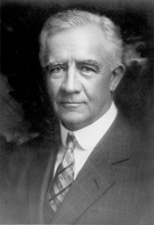
a Representative and a Senator from Nebraska; born in Omaha, Nebr., September 18, 1859; attended the public schools of Omaha and the gymnasium at Baden-Baden, Germany; graduated from the law department of the University of Michigan at Ann Arbor in 1881; admitted to the bar and commenced practice in Omaha, Nebr., in 1882; continued the practice of law until 1885, when he established and edited the Omaha Evening World; purchased the Nebraska Morning Herald in 1889 and consolidated the two into the Morning and Evening World Herald; unsuccessful Democratic candidate for election in 1898 to the Fifty-sixth Congress; elected as a Democrat to the Fifty-eighth Congress (March 4, 1903-March 3, 1905); unsuccessful candidate for reelection in 1904 to the Fifty-ninth Congress; elected as a Democrat to the Sixtieth and Sixty-first Congresses (March 4, 1907-March 3, 1911); did not seek renomination in 1910, having become a candidate for the United States Senate; elected as a Democrat to the United States Senate January 18, 1911; reelected in 1916 and served from March 4, 1911, to March 3, 1923; unsuccessful candidate for reelection in 1922 and for election in 1930; chairman, Committee on the Philippines (Sixty-third through Sixty-fifth Congresses), Committee on Foreign Relations (Sixty-fifth Congress), Committee on Forest Reservations and Game Protection (Sixty-sixth Congress); resumed newspaper work in Omaha, Nebr.; retired from active business in 1933 and moved to Washington, D.C., where he died on February 3, 1934; interment in Forest Lawn Cemetery, Omaha, Nebr.
(Source: http://bioguide.congress.gov/scripts/...)
More:
http://en.wikipedia.org/wiki/Gilbert_...
http://nebraskahistory.org/lib-arch/r...
(no image)Gilbert Hitchcock Of Nebraska: Wilson's Floor Leader In The Fight For The Versailles Treaty by Thomas W. Ryley
 James O' Gorman:
James O' Gorman: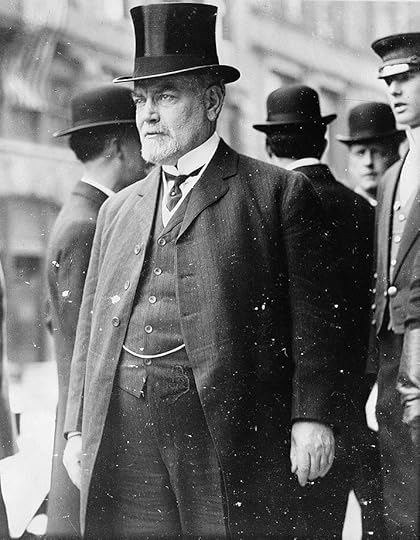
a Senator from New York; born in New York City on May 5, 1860; attended the public schools and the College of the City of New York; graduated from the law department of New York University in 1882; admitted to the bar the same year and commenced practice in New York City; justice of the New York District Court 1893-1900; justice of the New York State Supreme Court 1900-1911, when he resigned, having been elected Senator; elected as a Democrat to the United States Senate and served from March 4, 1911, to March 3, 1917; was not a candidate for renomination in 1916; chairman, Committee on Interoceanic Canals (Sixty-third and Sixty-fourth Congresses); president of the New York County Lawyers’ Association; trustee of New York University 1920-1927 and of the College of New Rochelle; resumed the practice of law in New York City; official referee of the New York Supreme Court from 1934 until his death in New York City May 17, 1943; interment in Calvary Cemetery, Long Island City, N.Y.
(Source: http://bioguide.congress.gov/scripts/...)
More:
http://en.wikipedia.org/wiki/James_Al...
 Clayton Antitrust Act:
Clayton Antitrust Act:1914, passed by the U.S. Congress as an amendment to clarify and supplement the Sherman Antitrust Act of 1890. It was drafted by Henry De Lamar Clayton. The act prohibited exclusive sales contracts, local price cutting to freeze out competitors, rebates, interlocking directorates in corporations capitalized at million or more in the same field of business, and intercorporate stock holdings. Labor unions and agricultural cooperatives were excluded from the forbidden combinations in the restraint of trade. The act restricted the use of the injunction against labor, and it legalized peaceful strikes, picketing, and boycotts. It declared that "the labor of a human being is not a commodity or article of commerce." Organized labor was as heartened by the act as it had been dejected by the doctrine of the Danbury Hatters' Case, but subsequent judicial construction weakened the act's labor provisions. The Clayton Antitrust Act was the basis for a great many important and much-publicized suits against large corporations. Later amendments to the act strengthened its provisions against unfair price cutting (1936) and intercorporate stock holdings (1950).
(Source: www.infoplease.com/encyclopedia/histo...)
More:
http://en.wikipedia.org/wiki/Clayton_...
http://www.stolaf.edu/people/becker/a...
 Norman Hapgood:
Norman Hapgood: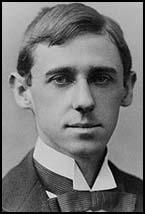
Norman Hapgood was born in Chicago, Illinois, in 1868. After studying at Harvard Law School he went into journalism. Hapgood became editor of Collier's Weekly in 1903. He soon developed a reputation of employing the country's leading writers. In May, 1906, he commissioned Jack London to report on the San Francisco earthquake. As well as London's account there were sixteen pages of pictures.
Under Hapgood's guidance, Collier's Weekly became involved in what became known as muckraking journalism. The most important of these writers who contributed to the journal during this period included Ida Tarbell, C. P. Connolly and Ray Stannard Baker.
Campaigns instigated by Norman Hapgood involved the direct election of senators, reform of the child labour laws, slum clearance and votes for women. In April 1905, an article by Upton Sinclair, Is Chicago Meat Clean, helped to persuade the Senate to pass the Pure Food and Drugs Act (1906) and the Meat Inspection Act (1906).
After working for Collier's Weekly (1903-12) Hapgood edited Harper's Weekly (1913-16). In 1919 Woodrow Wilson appointed Hapgood as his Minister to Denmark.
Norman Hapgood, who also edited the International Magazine (1923-25), died in 1937.
(Source: http://www.spartacus.schoolnet.co.uk/...)
More:
http://en.wikipedia.org/wiki/Norman_H...
 Bryan,
Bryan,Thanks especially for the additional information on the Federal Reserve Act, the Clayton Antitrust Act, and Wilson's Civil Rights record.
It sounds like the main contribution of the Federal Reserve Act was to help regulate the money supply. I wonder if the new system helped support failing member banks, or if that had to wait until the Depression.
 Regarding the segregation of the Federal Government:
Regarding the segregation of the Federal Government:I was disheartened to read that "The President's wife, Ellen Wilson, was said to have had a hand in segregating employees in Washington, encouraging department chiefs to assign blacks separate working, eating, and toilet facilities. To justify segregation, officials publicized complaints by white women, who were thought to be threatened by black men's sexuality and disease."
All of this reminds me of the fact that Oscar De Priest, black member of the the House of Representatives from 1929-1935, was not allowed to eat in the regular House restaurant because of his race. He introduced legislation to integrate it, but it was voted down. My husband passed along this information from The House: The History of the House of Representatives. That was a book recommended by you and he thoroughly enjoyed it.
Once again, thanks!
 Robert V. Remini
Robert V. Remini
 Glad he liked the book, Ann, and I didn't know about Mr. De Priest. Sad.
Glad he liked the book, Ann, and I didn't know about Mr. De Priest. Sad.Ellen came from a Georgia family, so she seemed to share the beliefs of the times.
 Federal Trade Commerce Act:
Federal Trade Commerce Act:established the Federal Trade Commission (FTC), a bipartisan body of five members appointed by the president of the United States for seven-year terms.
More:
http://en.wikipedia.org/wiki/Federal_...
http://www.stolaf.edu/people/becker/a...
http://en.wikipedia.org/wiki/Federal_...
 Henry Lane Wilson:
Henry Lane Wilson:
Henry Lane Wilson‘s career started before the 20th century began. Appointed by President William McKinley to be U.S. Ambassador to Chile, he was then assigned to Brussels, Belgium by McKinley’s successor, Theodore Roosevelt. However, most historians consider Wilson’s most important post to be U.S. Ambassador to Mexico (under President William Howard Taft), a position he held from 1910 until 1913, when he was summarily fired by the new U.S. President, Woodrow Wilson (no relation).
President Taft sent Wilson to Mexico in 1910 primarily to protect U.S. economic interests there: oil, mining, and the railroads. Taft had limited experience in foreign policy and made little effort to understand his neighbors to the South. His idea of diplomacy was what his administration called “dollar diplomacy” – U.S. relationships with other countries were based on what economic advantage they could supply. Early on in his presidency, Mexican dictator Porfirio Díaz had sold most of Mexico’s resources, especially those below the soil, such as copper and oil, off to the highest bidders–often to the U.S. U.S. ownership of these resources were investments worth protecting.
But in 1910, revolution was in the air, and President Taft was concerned with the coming changes in Mexico. In 1911, Francisco I. Madero and his Maderistas overthrew the Díaz regime, which had held power for almost forty years. Henry Lane Wilson became Taft’s eyes and ears in Mexico. In truth, Madero’s presidency represented no real danger to U.S. economic interests. Madero himself came from the upper class, and he was not about to upset the delicate economic balance in Mexico that had made his family rich. But Henry Lane Wilson disliked Madero, and decided that Madero had to be replaced.
In early 1913, Wilson began sending dire messages to Washington, claiming that the country was in chaos, and that something had to be done, because Americans and their property were at risk. As Taft was ignorant of, and had little interest in Mexican politics, he gave Wilson a wide berth to act as he saw fit.
Taft did not anticipate that his ambassador would aid and abet a rogue general, Victoriano Huerta, in organizing a coup against the Mexican president. But in February, 1913, Huerta initiated a coup against Madero, and Ambassador Wilson gave his blessing to what became known as the decena trágica, the Ten Tragic Days, during which Huerta terrorized Mexico City and seized power. Wilson ignored the pleas of Madero’s wife to save her husband’s life, telling her: “Your husband’s downfall was due to the fact that he never wanted to consult with me.” Days later, President Madero and Vice-President Pino Suarez were murdered by Huerta’s men.
In March, 1913, only a month after the coup, U.S. President Taft was replaced by Woodrow Wilson, and this represented a change in the U.S. political landscape in a variety of ways. The new president was briefed on the circumstances of the coup, and promptly asked Ambassador Wilson to come to Washington. The diplomat thought he was being re-assigned or promoted, but in fact he was summarily fired. He remained in government until after World War I – at which time he retired, complaining that the U.S. should not be so foolhardy as to get involved in the League of Nations – the post-war predecessor to the United Nations.
Years later, Henry Lane Wilson wrote in his autobiography a description of the events of the day he was removed from Mexico, July 17, 1913. He wrote that he couldn’t imagine why the new president was displeased with him and praised himself for his long career of service. For years following his tenure in Mexico, he and his children wrote articles and letters to newspapers refuting the idea that he had anything to do with the coup that killed Madero, and turned Mexico over to a murderous thug.
(Source: http://www.pbs.org/itvs/storm-that-sw...)
More:
http://en.wikipedia.org/wiki/Henry_La...
 William Bayard Hale:
William Bayard Hale: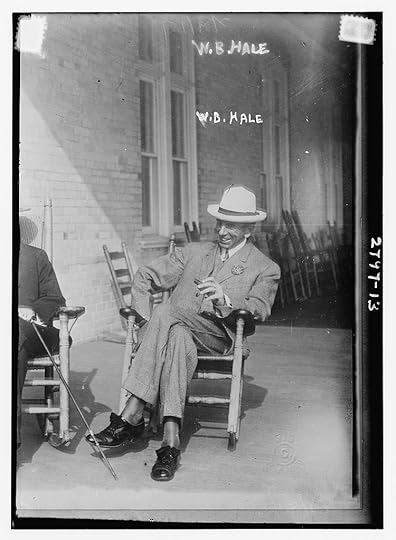
American journalist, b. Richmond, Ind. An Episcopal minister, he served in several parishes before attaining a national reputation as a journalist. In 1900, Hale became managing editor of Cosmopolitan. He wrote (1912) the campaign biography of Woodrow Wilson and helped in the publicity campaign to elect him president. His report (1913) as confidential agent in Mexico implicated ambassador Henry Lane Wilson in the murder of Francisco Madero by Victoriano Huerta. The report influenced the president to recall Wilson and initiate a campaign to drive Huerta from Mexico. In 1915, Hale turned propaganda adviser for Germany until the United States entered World War I. His book, American Rights and British Pretensions on the Seas (1915), stirred American resentment of the British blockade. Denounced and ostracized in the United States, he lived in Europe after the war.
(Source: http://www.infoplease.com/encyclopedi...)
More:
http://drs.library.yale.edu:8083/HLTr...
 Venustiano Carranza:
Venustiano Carranza: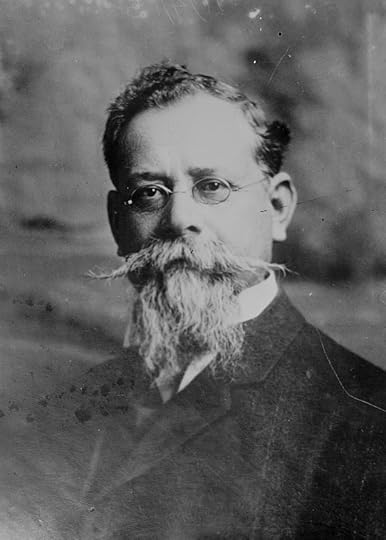
Sometimes derisively called “the billy goat” by his enemies because of his long flowing beard, Venustiano Carranza called himself the “Premier Jefe” (First Chief), because of his political ambitions. Carranza was born into the middle class at the end of 1859 in the northern state of Coahuila. He went to school at the Prepa (Preparatory school) in Mexico City just around the time the young Porfirio Díaz had proven himself a great military hero and was marching triumphantly into Mexico City.
After school, Carranza became a northern cattle rancher. He entered politics early when, along with his brother and other ranchers, he opposed Porfirio Díaz’s “reelection” in 1893. Thus, his actions anticipated the Maderista movement that came almost two decades later. Despite this, in 1904, the Governor of Coahuila recommended to Porfirio Díaz that Carranza would make a good senator. Although he didn’t like the científicos, Carranza did become a senator during Díaz’s administration. But when he tried to run for Governor of Coahuila, Díaz refused to support him, and he lost. From that point on, he disliked Díaz intensely.
Carranza came late to the revolution, but he did ultimately become a strong supporter of Francisco I. Madero and his anti-reelection movement, designed to remove Díaz from power. Madero made him Minister of War shortly before the Battle of Ciudad Juárez, and as a result, Carranza was part of the peace conference that led to the resignation and exile of Porfirio Díaz. Carranza was on the podium with Madero during Madero’s famous speech to the troops at the conclusion of that battle.
Carranza finally did become Governor of Coahuila, and in that role, watched as Madero’s presidency faltered. Carranza advocated for Madero to be stronger and more ruthless as a politician. When Victoriano Huerta and his co-conspirators (including U.S. Ambassador to Mexico, Henry Lane Wilson) overthrew Madero, Carranza watched helplessly as Madero was executed and Huerta took power.
In response to Huerta’s brutal dictatorship, Carranza issued his Plan de Guadalupe, calling for the restoration of the 1857 Constitution, and the elimination of Huerta. In 1913, the same year Huerta took power, Carranza developed what he called the Constitutionalist Army, to overthrow Huerta and establish what he imagined would be a constitutional democracy in Mexico. With his general, Álvaro Obregón, he developed a three-pronged military strategy to take Mexico City from the North – with Obregón coming down the western side of the country, Pablo González Garza coming down the eastern side, and Francisco Villa and his División del Norte cutting down the center.
The plan basically worked, and Huerta was defeated in mid-1914. He departed for Spain, and the Constitutionalists, specifically Obregón and Carranza, took over the government. Carranza pushed Villa, whom he had never liked, out of any position of power, just as Madero had done before him.
Carranza was not universally liked by the revolutionary leaders. They convened at the town of Aguas Calientes in October, 1914 to choose another leader. The result of this conference was that the joint armies of Villa and Emiliano Zapata rode into Mexico City, while Carranza fled to Veracruz to avoid the swell of popular support that surrounded the two iconic leaders.
The pattern of fleeing to Veracruz when things got rough in Mexico City was one that Carranza followed a few times, making him seem like a coward. But one thing that Carranza was able to do as leader of Mexico (in fact, a year before he officially became president), was to call for a convention to create a new constitution for Mexico. His idea was that the new constitution would be strongly based on the one from 1857 but would be moderately updated for the 20th century. Instead, more radical forces took political control of the convention’s agenda, and as a result, the Constitution of 1917 became a model of democracy, calling for labor reform, repatriation of land back to the peasants, and far-reaching restrictions on foreign access to Mexico’s natural resources.
But many forces were working against Carranza. The trauma of the revolution had left a country that was impoverished, with not enough food or clean water for its people. Illness was rampant. And when Carranza refused to begin instituting the reforms that the Constitution called for, both Villa and Zapata came to believe that Carranza needed to be overthrown.
When Villa attacked Columbus, New Mexico in 1916, Carranza gave the U.S. permission to send troops, led by General John J. Pershing, into Mexican territory to hunt him down. It was Carranza’s hope that Pershing could eliminate the threat of Villa, but Pershing’s troops were never able to locate the revolutionary leader. A closer threat to Carranza was Emiliano Zapata, who was based in Morelos, very close to Mexico City. Carranza developed a scheme to have Zapata eliminated. In April, 1919, the plot worked. A federal general pretended to defect to Zapata’s side, and was thus able to engineer his assassination.
But only a year later, it was Carranza’s turn. As he tried for a final time to flee Mexico City for Veracruz, conspirators working on behalf of his general, Álvaro Obregón, arranged to have Carranza’s train sabotaged, and the Premier Jefe was murdered that night. Later that same year, Obregón became President of Mexico.
(Source: http://www.pbs.org/itvs/storm-that-sw...)
More:
http://en.wikipedia.org/wiki/Venustia...
http://latinamericanhistory.about.com...
 Constitutionalists (Mexico):
Constitutionalists (Mexico):Carranzistas were the third faction in the Mexican Revolution consisting of mainly middle-class urbanites, liberals, and intellectuals who desired a constitution under the guidelines "Mexico for Mexicans". After the revolution they would dominate Mexican politics as the PRI until the late 1970s.
More:
http://en.wikipedia.org/wiki/Constitu...
 John Lind:
John Lind: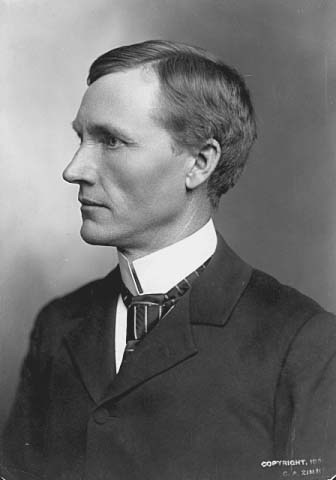
a Representative from Minnesota; born in Kanna, Sweden, March 25, 1854; immigrated to the United States in 1867 with his parents, who settled in Goodhue County, Minn.; moved to Sibley County in 1872; attended the public schools and the University of Minnesota at Minneapolis; taught school; studied law; was admitted to the bar in 1877 and commenced practice in New Ulm, Minn.; receiver of the United States land office at Tracy 1881-1885; elected as a Republican to the Fiftieth, Fifty-first, and Fifty-second Congresses (March 4, 1887-March 3, 1893); chairman, Committee on Mileage (Fifty-first Congress); declined to be a candidate for renomination in 1892; unsuccessful candidate for Governor of Minnesota in 1896; during the Spanish-American War was mustered into the service on May 5, 1898, as first lieutenant and quartermaster in the Twelfth Regiment, Minnesota Volunteer Infantry; was honorably discharged with his regiment November 5, 1898; Democratic Governor of Minnesota 1898-1900; unsuccessful candidate for reelection; elected as a Democrat to the Fifty-eighth Congress (March 4, 1903-March 3, 1905); declined to be a candidate for renomination in 1904; resumed the practice of law in Minneapolis, Minn., president of the board of regents of the University of Minnesota; was appointed by President Wilson as his personal representative to investigate the affairs of the United States Government in Mexico August 3, 1913; practiced law in Minneapolis, Minn., until his death in that city September 18, 1930; remains were cremated and the ashes interred in Lakewood Cemetery.
(Source: http://bioguide.congress.gov/scripts/...)
More:
http://en.wikipedia.org/wiki/John_Lin...
 Pancho Villa:
Pancho Villa:
Mexican revolutionary and guerrilla leader, who fought against the regimes of both Porfirio Díaz and Victoriano Huerta and after 1914 engaged in civil war and banditry.
Villa was the son of a field labourer and was orphaned at an early age. In revenge for an assault on his sister, he killed one of the owners of the estate on which he worked and was afterward forced to flee to the mountains, where he spent his adolescence as a fugitive.
Gen. Pancho Villa. [Credit: National Photo Company Collection/Library of Congress, Washington, D.C. (LC-DIG-npcc-19555)]In 1909 Villa joined Francisco Madero’s uprising against the dictator of Mexico, Porfirio Díaz. During the rebellion, Villa, who lacked a formal education but had learned to read and write, displayed his talents as soldier and organizer. Combined with his intimate knowledge of the land and the people of northern Mexico, these gifts enabled him to place at Madero’s disposal a division of trained soldiers under his command. After the success of the revolution, Villa remained in the irregular army.
Pancho Villa. [Credit: Encyclopædia Britannica, Inc.]In 1912, during the rebellion of Pascual Orozco, Villa aroused the suspicion of Gen. Victoriano Huerta, who condemned him to death, but Madero ordered a stay of execution and sent Villa to prison instead. Villa escaped from prison in November and fled to the United States. After Madero’s assassination in 1913, Villa returned to Mexico and formed a military band of several thousand men that became known as the famous División del Norte (Division of the North). Combining his force with that of Venustiano Carranza, Villa revolted against the increasingly repressive and inefficient dictatorship of Huerta, once again revealing his military talents by winning several victories. In December 1913 Villa became governor of the state of Chihuahua and with Carranza won a decisive victory over Huerta in June 1914. Together they entered Mexico City as the victorious leaders of a revolution.
Gen. Pancho Villa. [Credit: National Photo Company Collection/Library of Congress, Washington, D.C. (LC-DIG-npcc-19554)]Rivalry between Villa and Carranza, however, soon led to a break between the two, and Villa was forced to flee Mexico City with the revolutionary leader Emiliano Zapata in December 1914. Badly defeated by Carranza in a series of battles, he and Zapata fled to the mountains of the north. But in order to demonstrate that Carranza did not control northern Mexico, Villa executed some 17 U.S. citizens at Santa Isabel in January 1916 and two months later attacked Columbus, N.M., killing about 17 Americans. U.S. Pres. Woodrow Wilson then sent an expedition under Gen. John J. Pershing to that area, but, because of Villa’s popularity and intimate acquaintance with the terrain of northern Mexico and because of the Mexican government’s dislike of Pershing’s presence on Mexican soil, it proved impossible to capture Villa.
Villa continued his guerrilla activities as long as Carranza remained in power. After the overthrow of Carranza’s government in 1920, Villa was granted a pardon and a ranch near Parral, Chihuahua, in return for agreeing to retire from politics. Three years later he was assassinated on his ranch.
(Source: http://www.britannica.com/EBchecked/t...)
More:
http://history1900s.about.com/cs/panc...
http://en.wikipedia.org/wiki/Pancho_V...
 Friedrich Katz
Friedrich Katz Manuel Plana
Manuel Plana
 Occupation of Veracruz:
Occupation of Veracruz:Early 1914 found Mexico in the midst of civil war as rebel forces led by Venustiano Carranza and Pancho Villa battled to overthrow usurper General Victoriano Huerta. Unwilling to recognized Huerta's regime, US President Woodrow Wilson recalled the American ambassador from Mexico City. Not wishing to directly intervene in the fighting, Wilson instructed American warships to concentrate off the ports of Tampico and Veracruz to protect US interests and property. On April 9, 1914, an unarmed whaleboat from the gunboat USS Dolphin landed at Tampico to pick up drummed gasoline from a German merchant.
Coming ashore, the American sailors were detained by Huerta's federalist troops and taken to the military headquarters. The local commander, Colonel Ramon Hinojosa recognized his men's error and had the Americans returned to their boat. The military governor, General Ignacio Zaragoza contacted the American consul and apologized for the incident and asked that his regrets be conveyed to Rear Admiral Henry T. Mayo offshore. Learning of the incident, Mayo demanded an official apology and that the American flag be raised and saluted in the city.
Moving to Military Action:
Lacking the authority to grant Mayo's demands, Zaragoza forwarded them to Huerta. While he was willing to issue the apology, he refused to raise and salute the American flag as Wilson had not recognized his government. Declaring that "the salute will be fired," Wilson gave Huerta until 6:00 PM on April 19 to comply and began moving additional naval units to the Mexican coast. With the passage of the deadline, Wilson addressed Congress on April 20 and detailed a series of incidents that demonstrated the Mexican government's contempt for the United States.
In speaking to Congress, he asked for permission to use military action if necessary and stated that in any action there be "no thought of aggression or selfish aggrandizement" only efforts to "maintain the dignity and authority of the United States." While a joint resolution quickly passed in the House, it stalled in the Senate where some senators called for harsher measures. While debate continued, the US State Department was tracking the Hamburg-American liner SS Ypiranga which was steaming towards Veracruz with a cargo of small arms for Huerta's army.
Taking Veracruz:
Desiring to prevent the arms from reaching Huerta, the decision was made to occupy the port of Veracruz. As not to antagonize the German Empire, US forces would not land until the cargo had been off-loaded from Ypiranga. Though Wilson wished have the Senate's approval, an urgent cable from US Consul William Canada at Veracruz early on April 21 which informed him of the liner's imminent arrival. With this news, Wilson instructed Secretary of the Navy Josephus Daniels to "take Veracruz at once." This message was relayed to Rear Admiral Frank Friday Fletcher who commanded the squadron off the port.
Possessing the battleships USS Florida and Utah and the transport USS Prairie which carried 350 Marines, Fletcher received his orders at 8:00 AM on April 21. Due to weather considerations, he immediately moved forward and asked Canada to inform the local Mexican commander, General Gustavo Maass, that his men would be taking control of the waterfront. Canada complied and asked Maass not to resist. Under orders not to surrender, Maass began mobilizing the 600 men of the 18th and 19th Infantry Battalions, as well as the midshipmen at the Mexican Naval Academy. He also began arming civilian volunteers.
Around 10:50 AM, the Americans began landing under the command of Captain William Rush of Florida. The initial force consisted of around 500 Marines and 300 sailors from the battleships' landing parties. Meeting no resistance, the Americans landed at Pier 4 and moved towards their objectives. The "bluejackets" advanced to take the customs house, post and telegraph offices, and railroad terminal while the Marines were to capture the rail yard, the cable office, and the powerplant. Establishing his headquarters in the Terminal Hotel, Rush sent a semaphore unit to the room to open communications with Fletcher.
While Maass began advancing his men towards the waterfront, the midshipmen at the Naval Academy worked to fortify the building. Fighting began when a local policeman, Aurelio Monffort, fired on the Americans. Killed by return fire, Monffort's action led to widespread, disorganized fighting. Believing that a large force was in the city, Rush signaled for reinforcements and Utah's landing party and Marines were sent ashore. Wishing to avoid further bloodshed, Fletcher asked Canada to arrange a ceasefire with the Mexican authorities. This effort failed when no Mexican leaders could be found.
Concerned about sustaining additional casualties by advancing into the city, Fletcher ordered Rush to hold his position and remain on the defensive through the night. During the night of April 21/22 additional American warships arrived bringing reinforcements. It was also during this time, that Fletcher concluded that the entire city would need to be occupied. Additional Marines and sailors began landing around 4:00 AM, and at 8:30 AM Rush resumed his advance with ships in the harbor providing gunfire support.
Attacking near the Avenue Independencia, the Marines methodically worked from building to building eliminating Mexican resistance. On their left, the 2nd Seaman Regiment, led by USS New Hampshire's Captain E.A. Anderson, pressed up the Calle Francisco Canal. Told that his line of advance had been cleared of snipers, Anderson did not send out scouts and marched his men in parade ground formation. Encountering heavy Mexican fire, Anderson's men took losses and were forced to fall back. Supported by the fleet's guns, Anderson resumed his attack and took the Naval Academy and Artillery Barracks. Additional American forces arrived through the morning and by noon much of the city had been taken.
The Occupation of Veracruz
In the fighting, 19 Americans were killed 72 wounded. Mexican losses were around 152-172 killed and 195-250 wounded. Minor sniping incidents continued until April 24 when, after the local authorities refused to cooperate, Fletcher declared martial law. On April 30, the US Army 5th Reinforced Brigade under Brigadier General Frederick Funston arrived and took over the occupation of the city. While many of the Marines remained, the naval units returned to their ships. While some in the United States called for a full invasion of Mexico, Wilson limited American involvement to the occupation Veracruz. Battling rebel forces, Huerta was not able to oppose it militarily. Following Huerta's downfall in July, discussions began with the new Carranza government. American forces remained in Veracruz for seven months and finally departed on November 23 after the ABC Powers Conference mediated many of the issues between the two nations.
(Source: http://militaryhistory.about.com/od/b...)
More:
http://en.wikipedia.org/wiki/United_S...
http://www.veteranmuseum.org/us-mexic...
 Very interesting background information on the U.S. involvement in Mexico. I was appalled at the actions and words of Ambassador Wilson.
Very interesting background information on the U.S. involvement in Mexico. I was appalled at the actions and words of Ambassador Wilson. President Wilson found out enough to fire the ambassador, but Cooper mentions several times how hard it was to learn what was actually going on in Mexico.
I also didn't realize what a grip the U.S. and other foreign powers had on Mexico's natural resources. No wonder there has been so much resentment against the U.S. in Latin American countries.
Books mentioned in this topic
The A to Z from the Great War to the Great Depression (other topics)Dawn of Desegregation: J.A. De Laine and Briggs v. Elliott (other topics)
Notable U.S. Ambassadors Since 1775: A Biographical Dictionary (other topics)
Historical Dictionary of United States Political Parties (other topics)
Lawyers Lawyer: The Life of John W. Davis (other topics)
More...
Authors mentioned in this topic
Ophelia De Laine Gona (other topics)Harold F. Bass Jr. (other topics)
William Henry Harbaugh (other topics)
Cathal J. Nolan (other topics)
Neil A. Wynn (other topics)
More...





a Representative and a Senator from Virginia; born in Lynchburg, Campbell County, Va., January 4, 1858; attended private and public schools; newspaper reporter, editor and owner; member, State senate 1899-1903, when he resigned; delegate to the State constitutional convention in 1901; elected as a Democrat to the Fifty-seventh Congress to fill the vacancy caused by the death of Peter J. Otey; reelected to the Fifty-eighth and to the eight succeeding Congresses and served from November 4, 1902, until December 16, 1918, when he resigned to accept a cabinet position; chairman, Committee on Banking and Currency (Sixty-third through Sixty-fifth Congresses); member of the Democratic National Committee 1916-1928; appointed Secretary of the Treasury by President Woodrow Wilson and served from 1918 to 1920 when he resigned, having been appointed a Senator; appointed as a Democrat to the United States Senate on November 18, 1919, and subsequently elected on November 3, 1920, to fill the vacancy caused by the death of Thomas S. Martin in the term ending March 3, 1925, but did not qualify until February 2, 1920, preferring to retain his Cabinet portfolio; reelected in 1924, 1930, 1936, and again in 1942, and served from February 2, 1920, until his death on May 28, 1946; served as President pro tempore during the Seventy-seventh and Seventy-eighth Congresses; chairman, Committee on Expenditures in the Interior Department (Sixty-sixth Congress), Committee on Appropriations (Seventy-third through Seventy-ninth Congresses); declined an appointment as Secretary of the Treasury in the Cabinet of President Franklin D. Roosevelt; died in Washington, D.C., May 28, 1946; interment in Spring Hill Cemetery, Lynchburg, Va.
(Source: http://bioguide.congress.gov/scripts/...)
More:
http://en.wikipedia.org/wiki/Carter_G...
http://www.senate.gov/artandhistory/h...